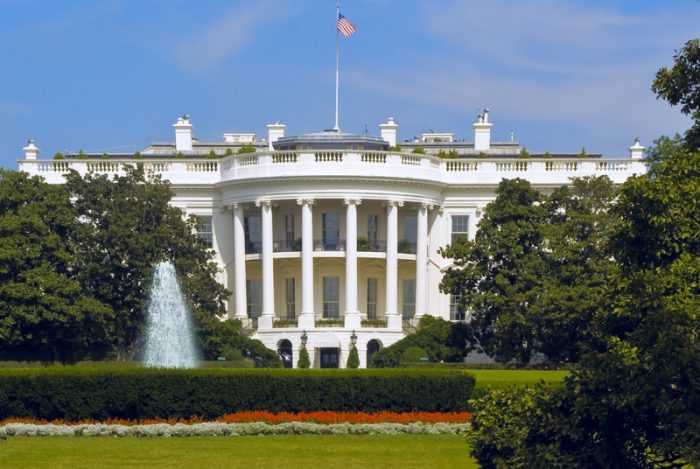Trump guts solar tax credits in ‘OBBBA’ and directs Treasury to issue more restrictive guidance

The Trump Administration and Republicans in Congress wanted to gut renewable energy incentives in the Inflation Reduction Act, and that mission was accomplished over the holiday weekend. Trump signed the One Big Beautiful Bill Act (OBBBA) into law on July 4. The residential solar tax credit officially ends at the end of the year. FEOC language looms as a potential poison pill for developers and U.S. manufacturers. And according to quotes from lawmakers following the signing, the obstacles for solar developers might not stop at the language in the bill.
Hard-line House conservatives said President Donald Trump assured them his administration would take action to constrict wind or solar projects that qualify for Inflation Reduction Act tax credits — a pledge that ultimately persuaded them to back the party’s megabill.
“We believe the administration is aligned with us on terminating those Green New Scam subsidies. We believe we’re going to get 90-plus percent of all future projects terminated,” said Rep. Chip Roy (R-Texas), a member of the House Freedom Caucus, after the megabill passed Thursday. “And we talked to lawyers in the administration. We believe that’s true.”
…
Rep. Ralph Norman (R-S.C.), another member of the House Freedom Caucus, echoed on CNBC earlier Thursday morning that Trump is going to use his powers “as chief executive” to make sure the companies that apply for solar credits, for example, are “doing what they say when they say they’ve started construction.”
Norman said Trump gave assurances that changes were going to be made, “particularly with getting permits,” although he did not provide further details. And while the president can’t remove the subsidies, Trump’s pledge on enforcement of the changes helped win support from conservatives.
UPDATE: As promised, Trump directed the Treasury Department to issue “new and revised guidance” within 45 days to restrict which projects will still qualify for solar tax credits. The order, subtly titled “ENDING MARKET DISTORTING SUBSIDIES FOR UNRELIABLE, FOREIGN CONTROLLED ENERGY SOURCES,” will redefine what constitutes “the beginning of construction” to restricting the use of “broad safe harbors” unless a “substantial portion of the facility has already been built.”
According to Keith Martin at Norton Rose Fulbright: there are two main ways to start construction of projects for tax purposes under existing Treasury guidance:
One is to “incur” at least 5% of the total project cost. Costs are usually incurred only as the developer takes delivery of equipment or services, with one exception. A payment for specific equipment or services by the deadline counts if delivery is reasonably expected within 3 1/2 months. There are nuances about counting payments for services.
The other way to start construction is to start “physical work of a significant nature” at the project site on the parts of the project on which an ITC can be claimed or at a factory on equipment that is tailored for use in the project.
Guess we’ll see how that changes things. For now, here’s a glance at what’s signed into law:
Solar tax credit changes in the Big Bill
We have covered each incremental step of the legislative process, and each draft of the bill seemingly got worse from a solar industry perspective. The following changes to the federal investment tax credits (ITC) are now law:
- The tax credit for residential solar (25D) will be terminated by Dec. 31, 2025. Our understanding is the language in 25D ties the credit to the completion of installation and not payment, preventing homeowners from prepaying for equipment to claim credits for future installations.
- However, the corporate tax credit (45E) is still accessible in residential via solar leases and PPAs – this was not the case in earlier drafts.
- For the corporate 45E tax credit, projects must be placed in service by Dec. 31, 2027 to earn the tax credit, with an exception for solar projects that begin construction within 12 months of enactment of the legislation.
- Home battery storage would qualify for the 48E tax credit through 2032.
- The domestic content percentage was tweaked for this year: 40% if construction began before June 16, 2025; 45% if construction begins on or after June 16, 2025, and before January 1, 2026. 50% if construction begins during the calendar year of 2026, and 55% if construction begins after December 31, 2026.
- A last second push for an additional excise tax on solar projects was avoided.
- The bill does not terminate rights to transfer energy credits under Section 6418.
- Projects that start construction after 2025 would not be able to receive credits if receiving “material assistance” from a Foreign Entity of Concern (FEOC) aka China. The Material Assistance Cost Ratio is extremely complex, and many in the industry are concerned about how workable this will be in practice.
- For manufacturers utilizing the 45X tax credits, any component made with material assistance from a prohibited foreign entity (FEOC) after December 31, 2025 is also ineligible.
For a more in-depth summary, I’d recommend this post from Frost Bown Todd. Or this summary from Novogradac.
Setting up TPO financing
With the 25D tax credit ending, is it time to start selling solar leases? If interested, here’s a crash course in third-party ownership (TPO) solar programs from BayWa r.e. Finance Program Manager Joshua Tinaglia.
Why should solar installers offer third-party ownership (TPO) financing?
Tinaglia: It’s another tool for your tool belt; it’s going to allow you to approach a market, your neighborhood, and have access to maybe two or three more homeowners out of 10 because they didn’t want to take on debt. They didn’t want to do a loan. They didn’t want to put money down or perhaps they’re trying to save money on a monthly basis, and they’re more payment constrained vs. their utility bill. TPO is going to beat a loan all day even with rates having dropped recently.
You’re going to be able to address customers you might not have won before and say I can get you a lower payment than your utility bill by X amount more by using this product. I think that’s really attractive for you, and also gives you another steady revenue stream for folks who are in that category, for areas where that’s going to be more of a concern.
How do I know the right financing options to offer my customer base?
Watch the full 20 min TPO discussion above, jump to a timestamp, or listen as a podcast.
- 0:35 – Why should I consider offering solar systems via leases – aka third-party ownership?
- 1:48 – Questions to ask of my business before offering TPO?
- 4:06 – Fundamental differences in leases vs loans, as a business model
- 5:49 – Is there more work on the front end?
- 7:08 – How do I evaluate TPO providers? Fine print to watch for?
- 11:01 – How does TPO change my cashflow?
- 12:58 – How does a lease deal change my O&M strategy?
- 14:24 – What if a TPO customer wants to add a battery?
- 16:47 – Examples of how financing can sink or save a business.
Investments at risk
The new bill puts hundreds of major factories announced or currently being built in jeopardy, threatening $132 billion in investments and 120,000 new jobs in 42 states, according to E2 analysis. The firm reports that businesses have already canceled or closed $15.5 billion worth of investments in new large-scale factories and projects because of the uncertainty around the tax policies.
Solar, wind and batteries, which account for more than 90% of all new power coming onto the grid, will be among the hardest-hit sectors, E2 reports. Projects will be shelved, development will stall, and the energy technologies most capable of keeping up with America’s skyrocketing demand for electricity will be sidelined. That means higher utility bills for families and businesses alike.
Solar industry reaction
Ray Long, President and CEO of the American Council on Renewable Energy (ACORE): “We are in a global race – not just for clean energy leadership, but for dominance in the technologies that will define the future, including artificial intelligence. China is aggressively investing in clean energy and digital infrastructure because they understand that energy security and economic competitiveness go hand in hand. This bill should have matched that urgency.”
David Widawsky, Director, WRI US: “While other countries are benefitting from accelerated investment in the clean energy economy, the U.S. is taking a step backwards. H.R.1. will undercut the Administration’s stated goal of ‘unleashing American energy’ and sends a chilling signal to families, businesses and investors alike. Abruptly phasing out clean energy tax credits will raise costs, slow innovation and jeopardize America’s energy security. Electricity demand is growing everywhere—and growing fast. The clean energy cuts in this bill will increase costs and constrain supply at a time when demand for electricity is surging.”
Danny O’Brien, president of corporate affairs at Qcells: “Industry and government have spent more than a decade reshoring the solar manufacturing industry from China to the U.S. Billions of dollars are being invested, the workforce is thriving, and solar energy is meeting the demands for cheap, reliable power. What Congress is advancing toward the President’s desk will harm U.S. manufacturers and invite China to flood our market again with dumped solar panels. Solar manufacturers must now turn to the Trump Administration to find ways to undo the damage.
EnergySage Director of Insights Emily Walker: “This bill doesn’t just eliminate clean energy tax credits prematurely—it will kill thousands of jobs, crush small businesses, and make home energy more expensive for millions of Americans. Clean energy is the only viable energy future—one that is sustainable, affordable, and provides the abundance of energy the world needs.”





Comments are closed here.